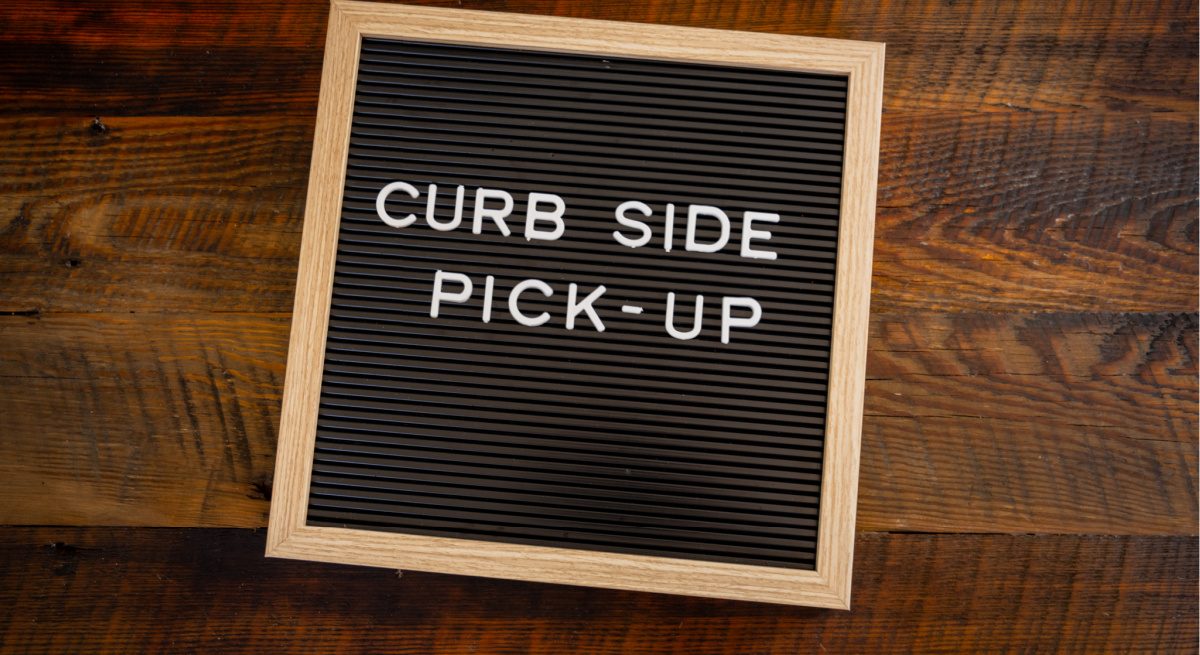Delivery Is the Hot Topic, but Curbside Is Driving the Sales
3 Min Read By Hope Neiman
Ever since the pandemic began, the restaurant industry has been in a sustained state of pivot. Many have started offering their menus on third-party delivery websites. Some have white-labeled those same delivery services for integration within their organizations, and others have built out programs for pick up or delivery entirely in house. Delivery, digital ordering and the digital tools associated are at the heart of many discussions in the industry.
Looking at the data proves much of what we already know. Yes, dine in numbers are way down (only 27 percent of patrons have dined in since COVID-19 began, per sense360). And yes, delivery is up (54 percent of people have utilized some form of restaurant delivery option).
However, an important and perhaps somewhat surprising segment of the current restaurant mix is soaring: curbside pickup.
In fact, almost half of the surveyed customers – 46 and 42 percent respectively – had utilized curbside or carry out during the earlier mentioned period. For all of the discussion about delivery, curbside and pick up orders represent an-at-least equally sizeable percentage of restaurant business in 2020, if not far larger.
The reality of restaurant operations during such unusual times is that brands need to be ready to turn on a dime. As the pandemic stretches out into its sixth month, with another six months or more of business disruption on the horizon, consumers are showing signals in their purchasing behaviors that they are growing wary of delivery and service fees. There is a limit to the kinds of incremental charges they will bear, at least as their preferred method of food ordering.
Curbside and pickup orders are, in the time of coronavirus, the bread and butter of restaurant success.
Which is exactly where curbside picks up the slack; it’s eating out without being out. It’s supporting local brands without incurring significant fees for delivery. Curbside and pickup orders are, in the time of coronavirus, the bread and butter of restaurant success.
Pick up orders allow customers the convenience of getting the food they want, without the fees, or the perception of pandemic exposure inherent to dine-in. Curbside orders also allow brands more quality control with fewer mitigators like late delivery or cold food. And, importantly, curbside pickup enables customers to interact directly with the brand to place and receive the order, keeping more dollars and data in the hands of local businesses.
The question isn’t whether curbside orders are a worthwhile investment; they are. Instead, the question is how to shift operations internally to deliver on guest expectations as a primary interest. Secondarily, how to streamline those customers and the various channels they arrive from into an email subscription, a loyalty program addition or an app downloaded for future marketing purposes.
The solution is actually rather simple: route your curbside and pickup orders through your contactless online or app-based ordering system, no matter the vector. Create a pathway for guests at home or on the phone, those at your host stand or standing outside your restaurant to reach your digital ordering platform, whether from web link, app download or QR code linkage.
From there, it’s easy to specify instructions: whether counter pick up, or curbside at a specific parking space. You can encourage guests to check in on arrival via phone or build geofence location into your digital footprint. Add fields that allow for their contactless instructions, for guests who want to pop the trunk, or have orders placed in the passenger side rear seat. The specifics may vary, but the idea is that you should create convenience in the process, and simultaneously open a channel for communication today and in the future.
With the tools to facilitate curbside orders, the next most important step is to ensure that your brand is operationally doing what you say. Make sure that the flows you build for pickup and curbside offers match your back office needs. There is a difference between when your ordering tools are integrated directly into the POS, or when they are aggregated externally.
For those that are integrated directly from order-to-POS, ensure that the ordering and preparation process is transparent for the kitchen. If instead your curbside orders end in the hands of an individual who must input into POS, make sure that those same lines of communication are transparent between the kitchen, the order builder and the guest.
Curbside and pick up orders are, without nearly the 2020 fanfare of delivery, among the most significant segments of the restaurant experience today. Third-party delivery services are expensive, and a meaningful percentage of restaurant-goers are opting out. For the restaurants with the agility to adapt to the need, curbside offers the opportunity to build loyalty, deliver on high-quality takeout and build digital marketing reach for a future when the pandemic has long since passed.


